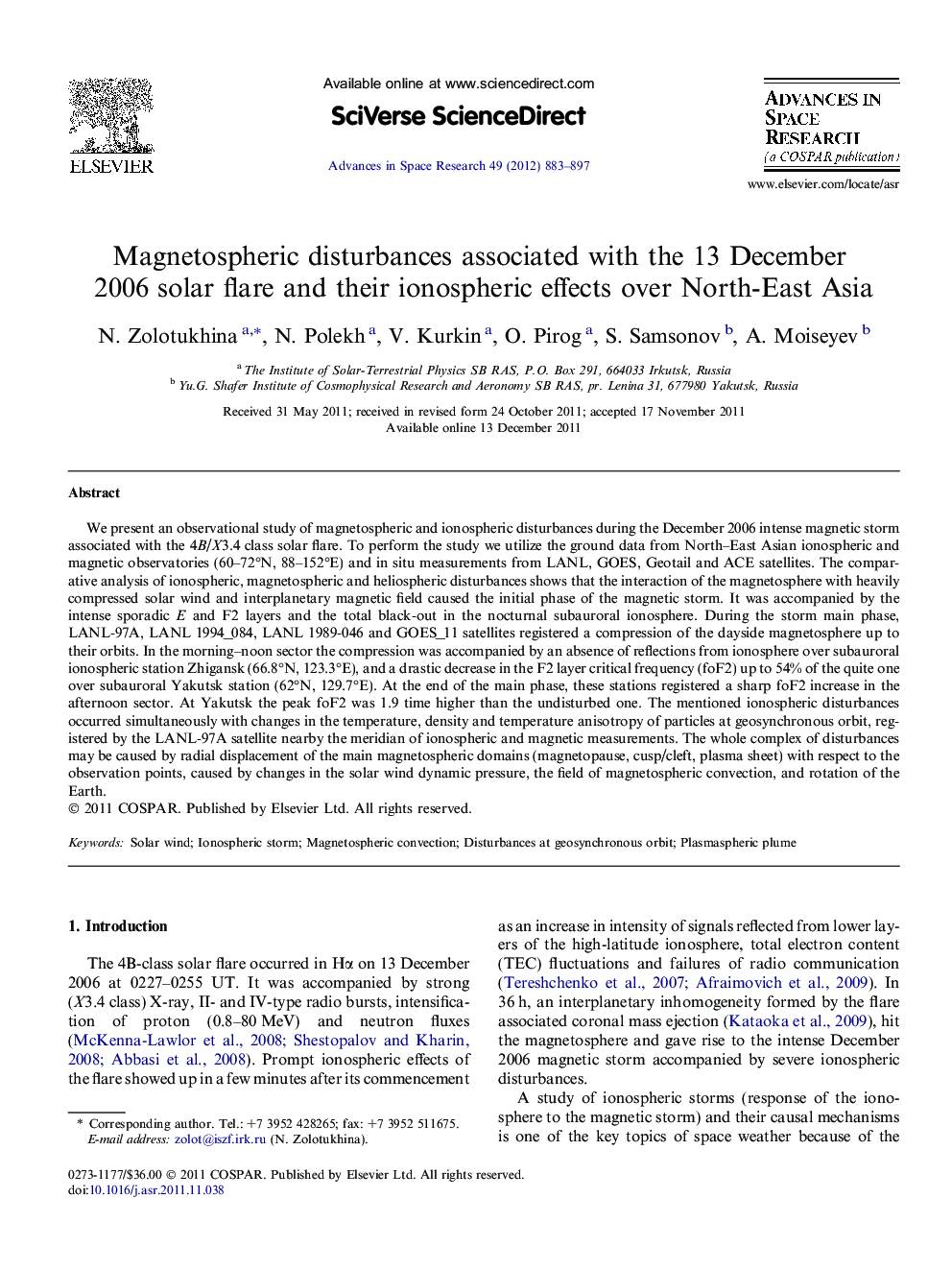| Article ID | Journal | Published Year | Pages | File Type |
|---|---|---|---|---|
| 1764875 | Advances in Space Research | 2012 | 15 Pages |
We present an observational study of magnetospheric and ionospheric disturbances during the December 2006 intense magnetic storm associated with the 4В/Х3.4 class solar flare. To perform the study we utilize the ground data from North–East Asian ionospheric and magnetic observatories (60–72°N, 88–152°E) and in situ measurements from LANL, GOES, Geotail and ACE satellites. The comparative analysis of ionospheric, magnetospheric and heliospheric disturbances shows that the interaction of the magnetosphere with heavily compressed solar wind and interplanetary magnetic field caused the initial phase of the magnetic storm. It was accompanied by the intense sporadic E and F2 layers and the total black-out in the nocturnal subauroral ionosphere. During the storm main phase, LANL-97A, LANL 1994_084, LANL 1989-046 and GOES_11 satellites registered a compression of the dayside magnetosphere up to their orbits. In the morning–noon sector the compression was accompanied by an absence of reflections from ionosphere over subauroral ionospheric station Zhigansk (66.8°N, 123.3°E), and a drastic decrease in the F2 layer critical frequency (foF2) up to 54% of the quite one over subauroral Yakutsk station (62°N, 129.7°E). At the end of the main phase, these stations registered a sharp foF2 increase in the afternoon sector. At Yakutsk the peak foF2 was 1.9 time higher than the undisturbed one. The mentioned ionospheric disturbances occurred simultaneously with changes in the temperature, density and temperature anisotropy of particles at geosynchronous orbit, registered by the LANL-97A satellite nearby the meridian of ionospheric and magnetic measurements. The whole complex of disturbances may be caused by radial displacement of the main magnetospheric domains (magnetopause, cusp/cleft, plasma sheet) with respect to the observation points, caused by changes in the solar wind dynamic pressure, the field of magnetospheric convection, and rotation of the Earth.
